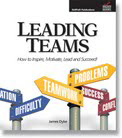Practice Fu Pan.
This advice is a perfect follow-up to my last blogpost. It comes from LENOVO founder Liu Chuanzhi, who referred to it in an interview published in FastCompany Magazine. LENOVO is the Chinese company that purchased IBM’s PC division. It has become one of the fastest-growing and most successful companies in the PC industry, holding the number two spot worldwide (behind HP).
LENOVO’s success has been fueled in large part by its emphasis on speed—not merely in computing speed, but in designing, production, marketing, and distribution. The practice of FU PAN represents a deliberate attempt to couple this speed with an intentional slowing-down, in order to apply thoughtful analysis to every event, success, or failure.
Replay the chess board – Analyze what happened

Liu defines FU PAN as “replaying the chess board.” The idea is to carefully examine your actions in order to improve the next time. LENOVO managers are trained to apply FU PAN to everything from a quick review of a workday incident to an in-depth analysis of a key process or major initiative. It is a vital response to any failure or mistake.
Why is this such an important practice?
CFO Wong Wai Ming is quoted in the FastCompany article: “The most dangerous thing is to be successful. You then think every decision is the right one. That’s why you have to review what you do.”
Past success can get in the way of future success – if you’re not careful!

I have often said that the biggest barrier to future success in any organization is its current success! Time and again I have seen leaders in an organization develop a hubris that invades their attitudes and mindsets—the belief that “we will succeed in the future because we have already succeeded.” That attitude feeds the abhorrent practice we all seek to avoid—resting on our laurels.
It also attracts a certain kind of employee—the person who is eager to work for a company with a “name.” One long-time leader I know put it this way: “When I joined this organization, we all came here because we wanted to build a great company. Now, people are coming here because they want to WORK at a great company.” This difference is subtle, but it makes all the difference in the world—the difference between success and failure!
The secret of FU PAN is to apply it to the analysis of success as carefully as you use it to examine failure.

The practice of FU PAN with your team begins with YOU. Start by using this method with your own work—your decisions, interactions, meetings, and work habits. Then introduce it to your team members. Use it to debrief your team’s work. Set aside one of your team meeting agenda items to debrief recent projects and assignments. Ask your team members to apply the practice to their own work and report their insights to you and to other team members. Share best practices as a team. Send the strong message:
“I want us to be constantly learning and getting better.”
For help in applying FU PAN (and other leadership techniques) CALL US! We can help! We can facilitate your team meetings and executive retreats with fresh approaches designed to meld people into a collaborative team; break through resistant company culture; and create new ways of thinking, planning, and working. And STAY TUNED to future posts for more great ways to improve your leadership!
Until next time… Yours for better leaders and better organizations,
Dr. Jim Dyke – “The Boss Doctor” ™ helping you to BE a better boss and to HAVE a better boss!


